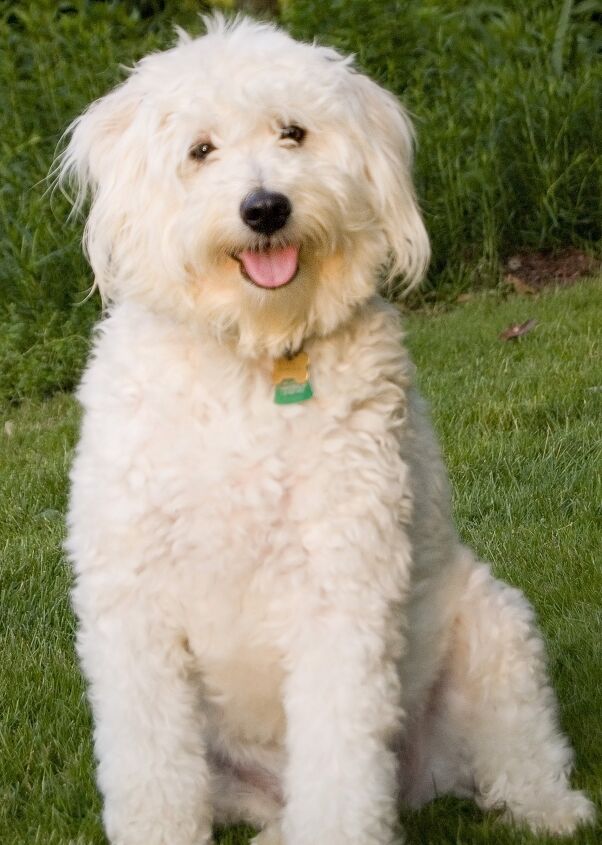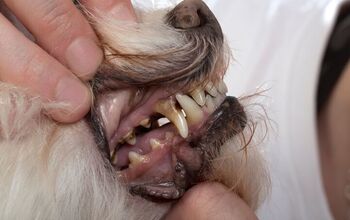Eskipoo


About Eskipoo
Whether you’re looking for a companion pooch to spend your retiring days with or would love to grace your family with their first family dog, the Eskipoo is a wonderful choice. These high-energy dogs, also known as the Pookimo or Eksapoo, have a naturally happy outlook on life and love to spend lots of time with their human family. They love to play and have a good time, making them a great breed to interact with children no matter their age.
Due to their small size, these dogs make excellent apartment dwellers so long as they are taken on regular walks and their barking is controlled. This pooch has a tendency to bark at any and all unfamiliar sounds, so training them so they won’t bother your neighbors is a must if you live in an apartment. They don’t do well in solitude and may suffer from separation anxiety if left for too long a time, which is the reason why they would do best with families with at least one person home, or couples where one person may work from home.
The Eskipoo is a cross between a Poodle and American Eskimo dog.
Bringing two breeds together to create a new breed has been all the rage for the past two decades. While some designer dog breed origins are known to us, we aren’t entirely sure how or when the Poodle and the American Eskimo mix came to be. Fortunately, we do know the beginnings of each of these breeds.
The Poodle started out as dogs who assisted their human masters on hunting trips – they were, in essence, water dogs! In fact, the German word “pudel” refers to the splashing this dog would make when retrieving waterfowl and the sort, and “Poodle” is simply the English equivalent.
In 19th-century America, white Spitz-type dogs were first found in the communities of German immigrants. They were the descendants of the German Spitz, white Keeshonden or white Pomeranians that came over with immigrants. In the late 19th century, these pooches became popular and were better known as the American Spitz, bred to be multi-purpose working dogs on farms. In 1917, the American Spitz became known as the American Eskimo, despite having no origin or connection to Eskimo culture whatsoever. They became popular in traveling circuses as trick dogs thanks to its gorgeous coat, amazing agility and ease of training.
The Eskipoo is cross of Poodle and American Eskimo dog.
The Eskipoo is an active dog and will require a healthy diet of high-quality kibble. Because this breed is prone to dental issues, dry kibble is recommended to help keep teeth strong. However, they do equal well on a wet-food diet if dental issues make chew dry kibble impossible.
The Eskipoo is a wonderful companion who will stick by your side and retain its puppy playfulness.
Both the American Eskimo and the Poodle are known for being people-pleasers, which makes them relatively easy to train. Crate, potty training and tricks should be a breeze to teach so long as the owner speaks evenly, is patient yet firm and always rewards good behavior with a piece of kibble or a treat. Both the Poodle and American Eskimo are intelligent dogs who are naturally well-behaved, so training them or teaching them some new moves should not take long.
A relatively small-sized breed, the Eskipoo can weigh anywhere from 13-20 pounds once it has reached adulthood.
The E
skipoo is a wonderful companion dog who will stick by your side like glue, yet play like a puppy well into its adult years. They have a cheerful disposition which will make them a joy to be around, especially when kids are involved. Loving and gentle, this breed will lick and love your child from their messy heads to their grubby little fingers and adore them till their last days. This breed’s size makes them ideal for house, condo or apartment living, so long as they have adequate time to go outside and get some fresh air and sunshine. A fenced backyard for a home should do just fine, while apartment dwellers need daily exercise in the form of a walk, plus a session or two (or more!) of indoor playtime in the form of “catch me if you can,” tug of war, etc.
The only downside to this breed is their tendency to howl and bark at unfamiliar sighs, sounds and faces but with proper training, the amount of times they do this can steadily decrease overtime. They also do not do well alone for long periods of time and may develop anxiety. While they are wonderful first-time pets because they do not need much maintenance, what they do need is plenty of love and attention to keep their spirits high. Retirees or seniors who would like a pooch that is gentle, fun, yet still challenges them to be moderately active during the day will definitely benefit from the Eskipoo.
This designer breed of dog can inherit any health issues from their parent breeds. Common health problems in poodles include cataracts and other eye disease such as eyelash abnormalities, retinal dysplasia, glaucoma and corneal ulcers. Poodles are also at high risk for cancer, and one of the most common forms of cancer poodles are susceptible to is digital squamous cell carcinoma, which originates at the toenails.
American Eskimos are relatively healthy, however they are also susceptible to a few genetic health issues such as luxating patellas, hip dyslasia, diabetes, juvenile cataracts, Legg-Calve-Perthes, allergies and tear-staining. Both the Poodle and the American Eskimo can develop PRA (progressive retinal atrophy).
The Eskipoo lifespan is usually 10-12 years.
The Eskipoo needs daily exercise in order to keep them in shape. American Eskimos tend to become overweight easily, and so owners need to keep an eye on their food intake and make sure they get their exercise. A walk around the neighborhood, dog park and running around in your fenced backyard, plus some indoor playtime should keep your pooch heart-healthy.
Eskipoos love to play and have a good time, making them a great breed to interact with children no matter their age.
The Eskipoo is not recognized by the American Kennel Club, as it is considered to be a hybrid breed. However, this breed is recognized by the American Canine Hybrid Club (ACHC), the Designer Dogs Kennel Club (DDKC), the International Designer Canine Registry (IDCR), where it is known as the Eskipoo, the Dog Registry of America (DRA) and Designer Breed Registry (DBR).
Your Eskipoo may have the curly coat of a Poodle or the longer, thicker coat of the American Eskimo or have a combination of both – it all depends how much they take from each parent. Because it has Poodle blood, the Eskipoo may have hypoallergenic fur, however the American Eskimo side may cancel that out. To keep their coat in good shape, they need regular brushing which all depends on their coat type. Longer, denser coats need more care than the typical Poodle fur. Because of their coats, however, this breed tends to do better in the winter than in the hot summer months. They can often be seen having a blast when it’s snowing out, rolling around in snow and having a great time. Be aware of the temperatures outside if you live in a particularly hot environment.
These dogs are rather small when puppies and so it is imperative to always have an adult supervise when children are playing with them. To have a well-rounded, even-mannered Eskipoo who is used to humans of any age as well as other animals once they are adults, remember to socialize these pups at a young age.
Photo credit: Joseph Nieforth/Flickr; Stephanie Wallace/Flickr; Justeenuh/ Flickr

More by Diana Faria
























